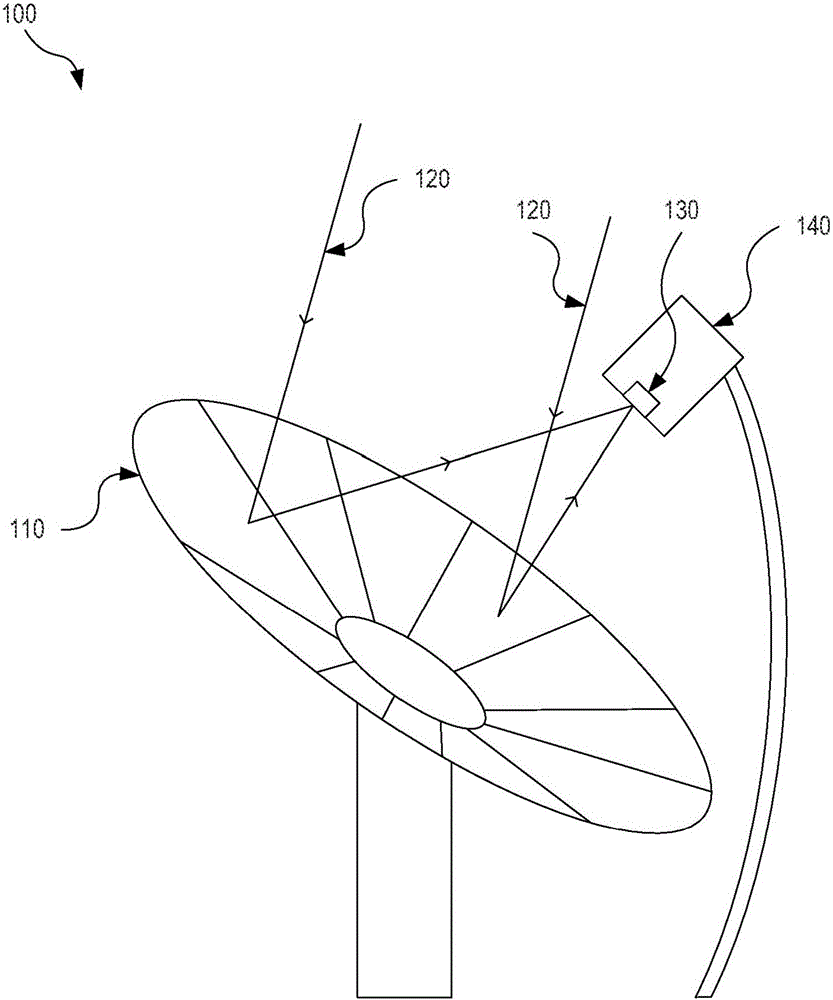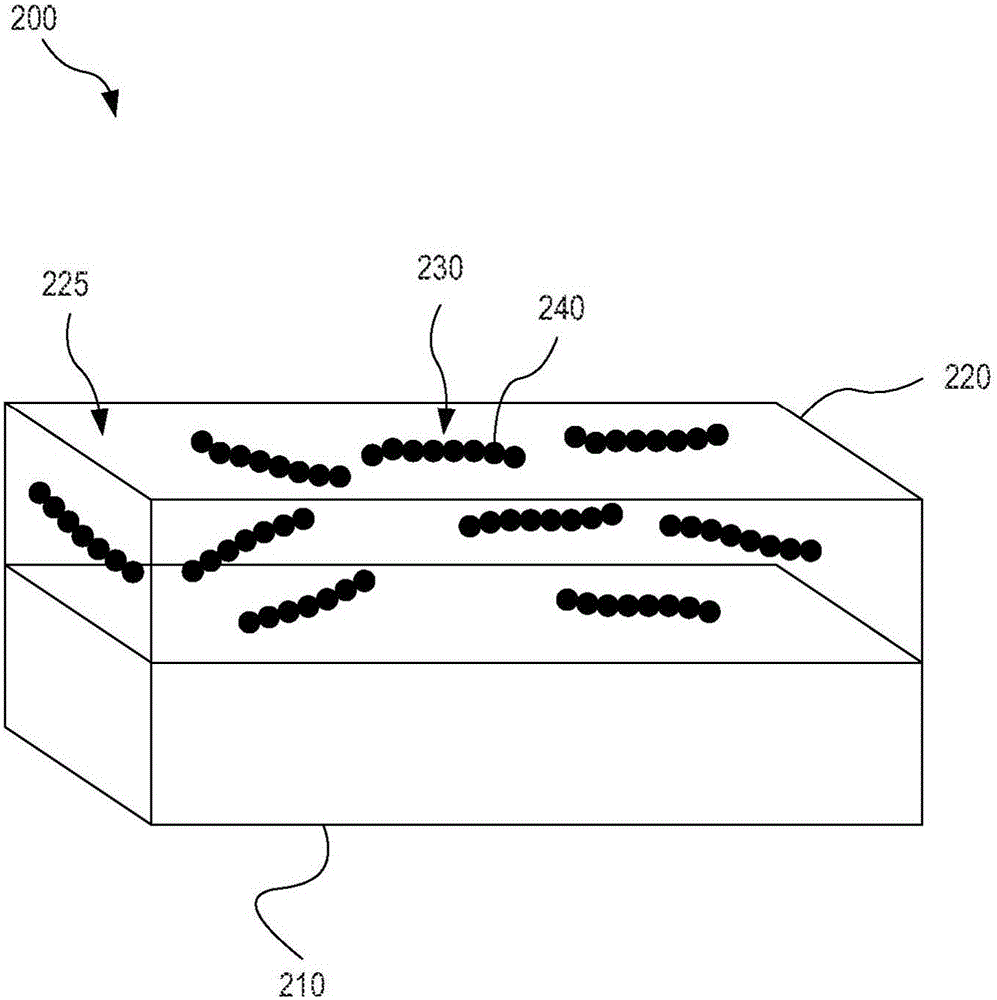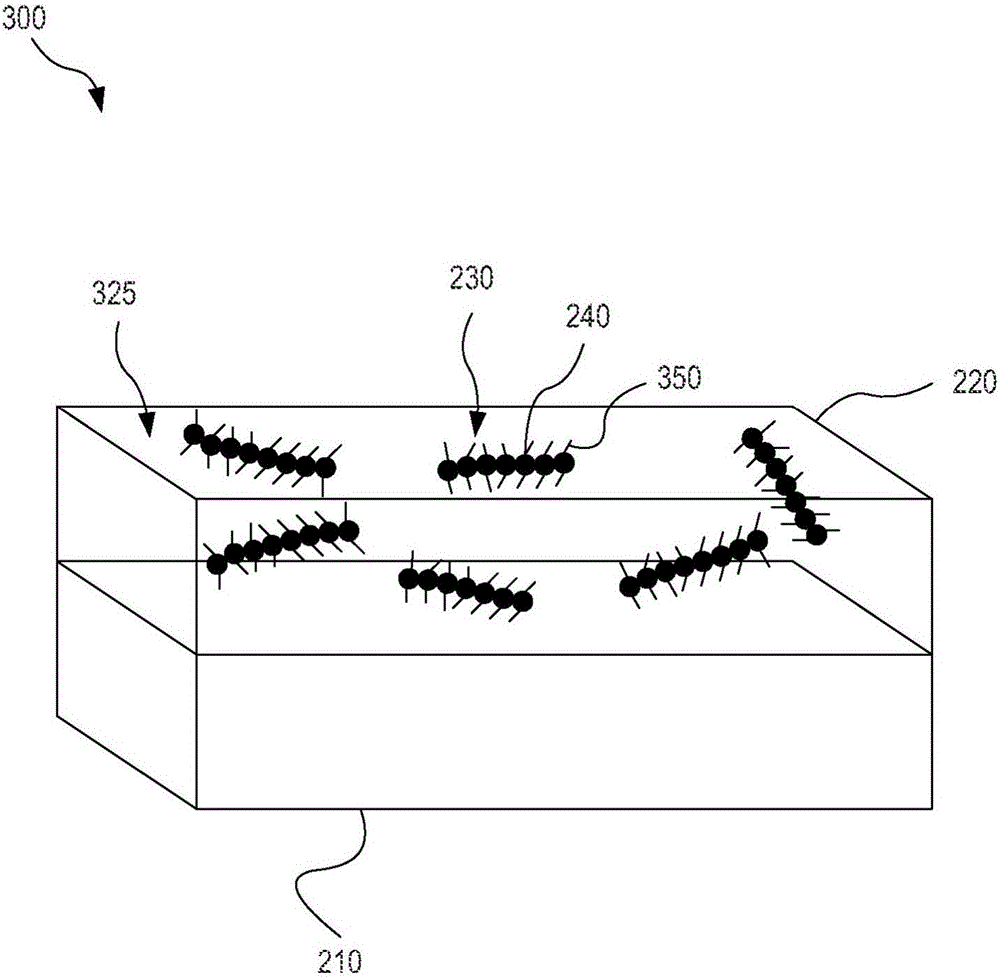Systems and methods using metal nanostructures in spectrally selective absorbers
A metal nanostructure, nanostructure technology, applied in nanotechnology, nanooptics, nanotechnology, etc., can solve problems such as increasing costs
- Summary
- Abstract
- Description
- Claims
- Application Information
AI Technical Summary
Problems solved by technology
Method used
Image
Examples
Embodiment I
[0100] Embodiment I: Ni nanochain-Al 2 o 3 Spectrum Selective Solar Thermal Absorber
[0101] This embodiment constitutes figure 2 A particular embodiment of the absorber 200 optimized for use as a spectrally selective solar thermal absorber, wherein the metal nanoparticles 240 are Ni nanoparticles and thus the nanochains 230 are Ni nanochains. The matrix 220 is composed of Al with embedded Ni nanochains 2 o 3 metal ceramics. The diameter of the Ni nanoparticles is about 100 nm, which is small enough not to be resolved by short-wavelength infrared photons and mid-infrared photons from thermal radiation. The fabrication method described in this example is Figure 4 An embodiment of the method 400. Matrix material Al2 o 3 It is selected for its ability to withstand high temperatures. In addition, Al 2 o 3 is an inexpensive material commonly used in many different systems and applications. Other suitable matrix materials include aluminum nitride, silicon oxide, and s...
Embodiment II
[0125] Example II: Synthesis of Ni Nanochains Composed of Hollow Ni Nanoparticles
[0126] This example shows Figure 4 An embodiment of step 410 to form hollow Ni nanoparticles and their chains, which respectively constitute figure 2 and image 3 Embodiments of nanoparticles 240 and nanochains 230.
[0127] Hollow Ni nanoparticles and nanochains are used for passing through Ni(DS) 2 Nickel dodecyl sulfate (Ni(DS) 2 ) and NaH 2 PO 2 The oxidation-reduction reaction forms nano-sized Ni spheres by hydrothermal method. Figure 10 A general method 1000 for forming hollow Ni nanoparticles is shown. Ni(DS) that will be marked as 1010 2 dissolved in water to form spherical micellar templates 1020, and in OH - Ni 2+ Ions and H 2 PO 2- react to form Ni atoms 1030 . Next, as shown by reference 1040 , the Ni atoms aggregate and gradually develop into Ni hollow nanoparticles 1050 . Oh - The presence of plays an important role in the formation of shell structures rather tha...
Embodiment III
[0130] Example III: Oxidation-resistant, metal-nanostructure-based spectrally selective solar thermal absorber
[0131] In this example, it is disclosed for image 3 The system 300, Figure 4 The method of , and optionally method 700 ( Figure 7 ), method 1000( Figure 10 ), and / or method 1100 ( Figure 11 ) A method of making a spectrally selective solar thermal absorber. In this particular embodiment, the nanostrands (eg, nanostrands 240) are protected from oxidation. This has important implications for CSP systems where the presently disclosed antioxidant spectrally selective solar thermal absorbers can be incorporated under ambient atmosphere as opposed to being kept under vacuum. Nanoparticles may consist of hollow and / or solid nanoparticles. In certain embodiments, nanochains comprise a plurality of nanoparticles in the range of 2-10,000 nanoparticles. absorber manufacturing
[0132] Figure 12 shown for the fabrication of Ni nanoparticles or Ni nanochains based...
PUM
| Property | Measurement | Unit |
|---|---|---|
| Diameter | aaaaa | aaaaa |
| Diameter | aaaaa | aaaaa |
Abstract
Description
Claims
Application Information
 Login to View More
Login to View More - R&D
- Intellectual Property
- Life Sciences
- Materials
- Tech Scout
- Unparalleled Data Quality
- Higher Quality Content
- 60% Fewer Hallucinations
Browse by: Latest US Patents, China's latest patents, Technical Efficacy Thesaurus, Application Domain, Technology Topic, Popular Technical Reports.
© 2025 PatSnap. All rights reserved.Legal|Privacy policy|Modern Slavery Act Transparency Statement|Sitemap|About US| Contact US: help@patsnap.com



